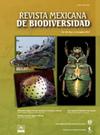The reef fish assemblage of a coral reef system in the southwestern Gulf of Mexico
IF 0.8
4区 环境科学与生态学
Q4 BIODIVERSITY CONSERVATION
引用次数: 0
Abstract
Reef fish species richness of the Veracruz Reef System National Park (VRSNP) in the SW Gulf of Mexico is well known. However, the knowledge of the assemblage structure and its spatial variability in the reef ecosystem is quite limited. For that purpose, 5 field surveys (2012-2015) were performed, using the stationary visual census method, at 10 selected reefs. The most important findings were: 116 reef species were recorded. Average total reef fish density (2.31 Ind/m2) is similar to the records for the Caribbean reefs in the 20th century. The top 5 most abundant species were: Chromis multilineata, Ocyurus chrysurus, Abudefduf saxatilis, Stegastes leucostictus, and Elacatinus jarocho. We found evidence of a spatial distribution pattern with 3 well-defined groups of reefs: (1) those near the city of Veracruz, (2) those near the outlet of the Jamapa River, and (3) those farther from the city. Higher fish densities are associated to both high hermatypic coral and low crustose coralline algae bottom covers. The assemblage structure of reef fishes is different at distinct geomorphological reef zones. As expected, with some differences in the species abundance order, the assemblage structure of reef fishes is similar at all coral reefs in the Gulf of Mexico.墨西哥湾西南部珊瑚礁系统的礁鱼群落
位于墨西哥湾西南部的韦拉克鲁斯珊瑚礁系统国家公园(VRSNP)的珊瑚鱼物种丰富度是众所周知的。然而,对珊瑚礁生态系统的组合结构及其空间变异性的认识非常有限。为此,使用固定视觉普查方法,在10个选定的珊瑚礁进行了5次实地调查(2012-2015)。最重要的发现是:记录了116种珊瑚礁。平均总礁鱼密度(2.31 Ind/m2)与20世纪加勒比海珊瑚礁的记录相似。最丰富的前5种分别是:多线毛茛(Chromis multilineata)、黄颈毛茛(cyurus chrysurus)、Abudefduf saxatilis、Stegastes leucostictus和Elacatinus jarocho。我们发现了3个明确的珊瑚礁群的空间分布模式的证据:(1)靠近韦拉克鲁斯市的,(2)靠近贾帕帕河出口的,(3)远离城市的。较高的鱼类密度与高的两性珊瑚和低的甲壳珊瑚藻类底盖有关。在不同的地貌礁带,礁鱼的组合结构不同。正如预期的那样,在墨西哥湾所有珊瑚礁中,珊瑚鱼的组合结构是相似的,只是在物种丰度顺序上存在一些差异。
本文章由计算机程序翻译,如有差异,请以英文原文为准。
求助全文
约1分钟内获得全文
求助全文
来源期刊

Revista Mexicana de Biodiversidad
环境科学-生物多样性保护
CiteScore
1.50
自引率
11.10%
发文量
69
审稿时长
12-24 weeks
期刊介绍:
Revista Mexicana de Biodiversidad appears in 4 issues per year and publishes the products of original scientific research regarding biodiversity of the Americas (systematics, biogeography, ecology and evolution), as well as its conservation and management.
The journal ensures high standards with a system of external peer review, and is included in the list of excellence of journals of the National Council of Science and Technology (CONACyT, Mexico). It is currently included in ASFA, Biological Abstracts, Biological Sciences, Latindex Periódica, RedALyC, Web of Science (Thomson Reuters), SciELO, SCOPUS, and Zoological Records.
 求助内容:
求助内容: 应助结果提醒方式:
应助结果提醒方式:


